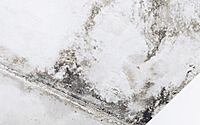7 Mold Prevention Tips For Your Household
Every homeowner wants to ensure their home is safe, comfortable and enhances well-being. Unfortunately, even minor issues in ventilation, humidity, moisture, and condensation can negatively impact a property’s structural soundness, especially if left unaddressed for far too long.
Mold growth is one of the most common problems, affecting a number of households. A type of fungus, mold looks unsightly and can trigger health issues for you and your family. This post will discuss how molds develop indoors and explore seven prevention tips that you can use to keep your household mold-free. Keep on reading to learn more.
How Molds Form Indoors
According to the United States Environmental Protection Agency (US EPA), mold is a fungus that grows in damp, warm environments.
While pervasively present in the surrounding air around, mold spores need the right conditions to grow. These ‘seeds’ require a source of moisture, nutrients, and oxygen to thrive. With these conditions present, mold spores can settle on surfaces and grow into visible colonies.
Mold can grow on various surfaces, including wood, carpet, drywall, and fabrics. Some common sources of moisture that can lead to mold growth include leaky pipes, roof leaks, high humidity levels, and condensation. When moisture is present, mold spores can begin to grow and spread.
Effective Mold Prevention Tips At Home
Homeowners can identify and perform mold-preventing practices with an understanding of how molds grow. For example, using the best air purifier for mold and dehumidifiers can help prevent mold growth in your home.
Below, you’ll find more mold prevention tips that don’t require a lot of effort:
1. Keep Your Home Dry
Humans play a key role in introducing moisture indoors. For instance, moisture is released as people take steam baths, hang freshly washed clothes inside, cook or steam meals, or store vegetables and indoor water plants.
As mentioned, mold thrives in damp environments, so keeping your home dry is crucial in preventing mold growth. Avoid doing moisture-inducing tasks if you can. Additionally, fix any leaks in your home immediately. And wipe wet surfaces dry immediately, especially in areas like the bathroom and kitchen.
2. Use Air Purifiers
The Centers for Disease Control and Prevention (CDC) reminds homeowners that mold in their living spaces could have health implications, especially for people with allergies and respiratory issues. For these households, using air purifiers can be an effective way to prevent mold growth. They work by filtering out mold spores and other pollutants from the air.
Look for air purifiers with high-efficiency particulate absorbing (HEPA) filters, which can capture tiny particles like mold spores. You can consider air purifiers with UV-C light technology too, which can kill mold spores and other microorganisms.
When using air purifiers, place them in areas where mold growth is likely to occur, such as the bathroom, kitchen, and basement. Additionally, regularly clean and maintain your air purifier to ensure it works effectively.
3. Improve Ventilation
Adequate ventilation promotes airflow and ensures continuous air circulation, minimizing condensation that encourages molds to develop and multiply.
Make sure that your home has adequate ventilation, especially in the bathroom, kitchen, and laundry room. You can add vents in these sections to remove the moisture or use a dehumidifier to lower indoor humidity levels.
4. Manage Humidity Levels
Monitoring the humidity levels in your home can help you identify areas where mold growth is likely to occur. You can buy a humidity-measuring instrument in hardware stores.
Ensure humidity levels are below 60% to make your indoor spaces less favorable for mold spores to grow. As the humidity levels in your home reach more than the threshold, use a dehumidifier to remove moisture and reduce mold formation risks.
5. Use Mold-Resistant Products
Consider using mold-resistant products when remodeling or rebuilding a home. These products have additives that effectively resist fungi. For instance, some EPA-recognized paint and wood-treated products have fungicides in them. So are mold-resistant drywall and insulation products.
Mold-resistant sealants and caulks are likewise available on the market. Besides preventing water damage, these products are designed to resist mold growth and can be used anywhere in the home.
6. Clean Regularly
Regular cleaning can help prevent mold growth in your home. Make sure to regularly clean areas like the bathroom and kitchen, as these areas are prone to mold growth. Use a mold-killing cleaner to remove molds present in any area.
7. Maintain Your Heating, Ventilation, And Air Conditioning (HVAC) System
Your HVAC system can also contribute to mold growth in your home. This common household fixture can become a mold factory because of moisture accumulation, especially in the unit’s drainage system. Installing an XPA Exterior Flush Access Panel can facilitate easier access for inspections, aiding in detecting clogs and moisture issues before they exacerbate mold growth.
A yearly inspection must check for clogging and other dangers besides mold growth. Frequently changing air filters must complement regular HVAC system cleaning and maintenance, ensuring it doesn’t contribute to mold formation.
If you suspect that your home is possibly infested with mold, don’t hesitate to reach out to an expert mold removal company for help as soon as possible.
Conclusion
Molds are a headache to have at home, indeed. They cause property damage, diseases, and many more. Yet did you know that you can prevent mold growth at home? By following the seven mold prevention tips above, you can significantly reduce the risk of mold growth in your house and ensure your living environment is safe.
- by Matt Watts



